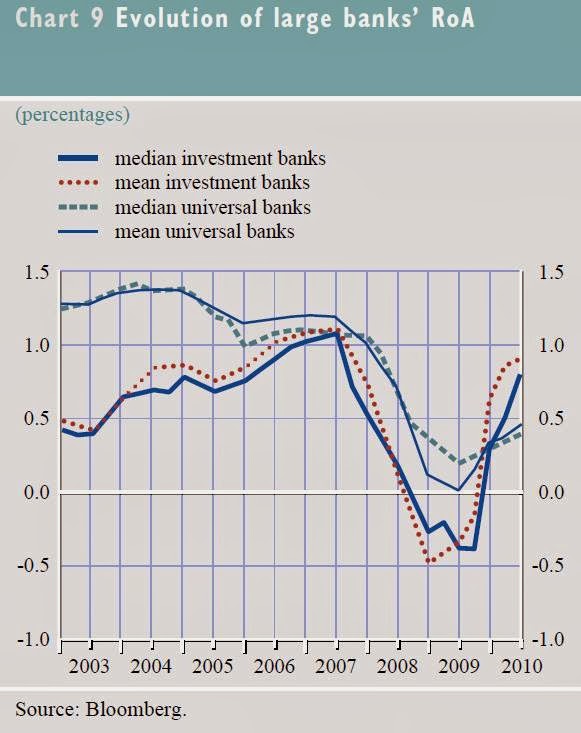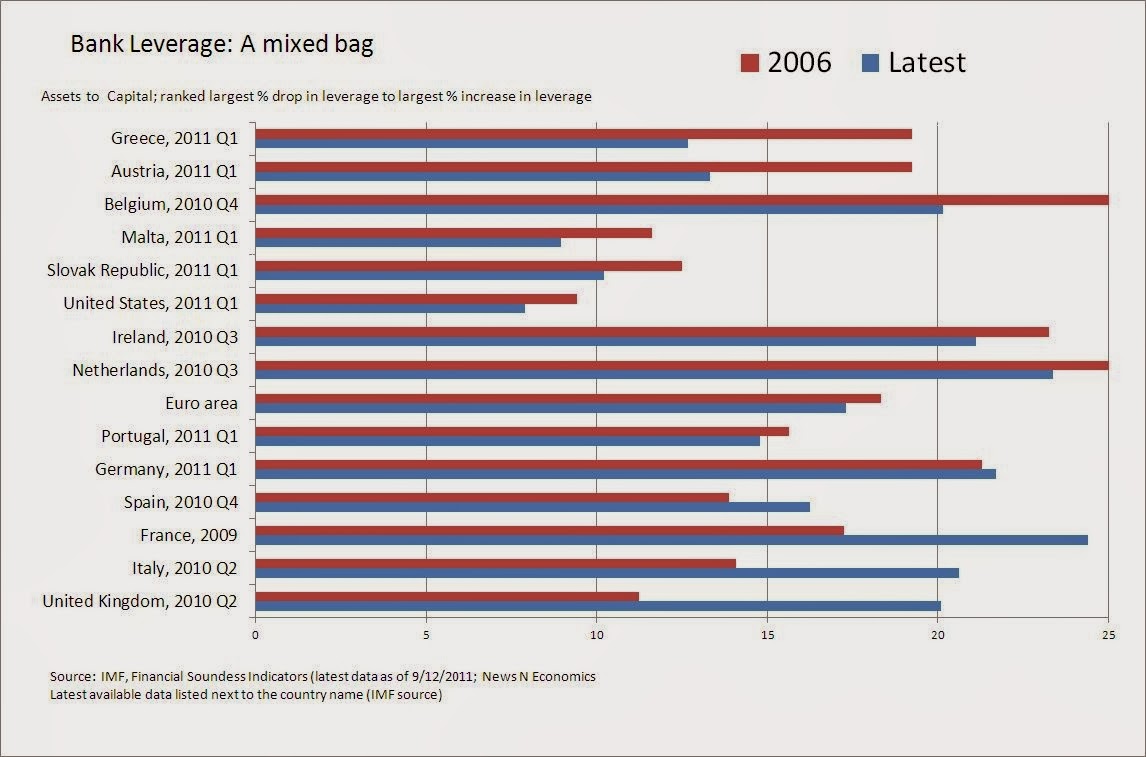The difference between the 3-month LIBOR rate
and the 3-month Treasury rate, also called the TED spread, is a commonly used indicator for the perceived credit risk in the general economy. Defining this spread
requires an explanation of its parts. As a rule of thumb, the TED spread tends
to be wide if banks view loans as risky and investors are nervous. In contrast,
it will be small when markets are stable. We will now identify the parts of the
TED spread.
We start off by defining the LIBOR rate. The LIBOR is an interest rate which serves as
a benchmark for the interest rates charged by banks when they lend funds to
each other. The market where banks lend funds to each other is called the
interbank market. So as some might have noticed, the LIBOR is actually an abbreviation.
More specifically it stands for the London InterBank Offer Rate. This interest
rate is determined by the average of borrowing costs of global banks,
discarding upper and lower quartiles. It’s important to realize that banks all
around the world use the LIBOR as a base rate for setting their own interest
rates on loans. In order to see the importance of the LIBOR, one should know
that hundreds of trillions of dollars in securities and loans are linked to the
LIBOR. When the LIBOR rises, rates and payments on loans often rise. Similarly,
they fall when the LIBOR goes down.
Second, the U.S. Treasury Bill rate can be seen
as being risk-free. Thus the size of the TED spread indicates the liquidity
premium in the market, as the LIBOR indicates the credit risk of lending to
banks. The TED spread can widen due to an increase of the LIBOR or a decrease
of the Treasury rate. We already have discussed the widening based on the LIBOR
rate. The widening of the TED spread, based on the Treasury rate, occurs
because banks want to get first-place collateral in times of crisis. This means
that they will like to hold more Treasury bonds, pushing down the Treasury
rate. We give a visual representation of the widening of the TED spread during
crisis times below. In this graph an overview is given of the TED spread between
April 2007 and January 2009, indicating the recent financial crisis.
In the following part we discuss the manipulation
of the LIBOR, also called the LIBOR fixing scandal. During the financial
crisis, banks manipulated the LIBOR rate in order to show a healthier picture
of their credit quality and ability to raise funds. Namely, the true LIBOR rate
would reveal problems with respect to the ability to borrow funds from the
market. Thus the LIBOR rate was kept at a level that was unrealistically low. In
the beginning of the financial crisis, the credit markets for banks started to
freeze up. Banks began to suffer losses on their holdings of toxic securities
relating to American subprime mortgages. As a consequence, banks were reluctant
to lend to one another which led to shortages of funds. So there was little
data in submitting LIBOR. This allowed for the opportunity to set LIBOR rates
that did not match reality. Several banks were taken under the loop in the investigations
but in order to demonstrate the event, we would like to refer to the following
graph. This shows the range of different LIBOR rate submissions by banks after
the Lehman Brother collapse. As you can see, before this point the rate
submissions were very similar.
The investigations into the fixing of the LIBOR
rate by the national authorities led to global penalizations of numerous large
and well-known banks. The European Commission, for instance, fined six
financial institutions including Deutsche Bank and Citigroup with the highest
antitrust penalty and the highest penalty for rigging financial benchmarks ever.
"What is shocking about the Libor and Euribor scandals is … the collusion between banks who are supposed to be competing with each other"
References:









